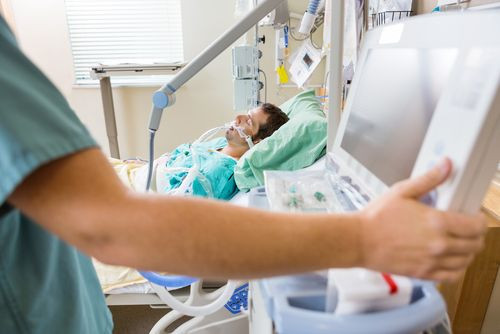Forecasts Prove True: The Covid Tidal Wave Is Near

Last spring, scientists predicted how bad the pandemic’s reach and depth could be this fall and winter.
The World Economic Forum, a non-profit foundation headquartered in Geneva, Switzerland, said the most likely scenario by the end of 2020 was a second, larger wave, with higher infection rates.
"The idea that this is going to be done soon defies microbiology," said infectious disease expert Michael Osterholm, PhD, on CNN. Dr. Osterholm is a co-author of the World Economic Forum report.
Their predictions have come true. COVID-19 infections are breaking records across the US.
As of today, Election Day, Nov. 3, every state has shown a rise in cases and deaths. At this point, more than 231,000 people have died from the virus in the US. Over the past week, the average number of cases per day has increased by 45%, compared to the prior two weeks. The average is almost 83,000 cases per day.
A second wave by Thanksgiving
Speaking recently on the Face the Nation TV news program, Scott Gottlieb, former commissioner of the US Food and Drug Administration, predicted that Thanksgiving would be an “inflection point,” meaning the curve representing infections will turn -- and not for the better.
“[T]hings are getting worse around the country. I think Thanksgiving is really going to be an inflection point. I think December is probably going to be our toughest month,” Dr. Gottlieb said.
“We're right at the beginning of what looks like exponential growth in a lot of states, the Midwest, the Great Lakes region, even states like Texas, where you see 6,000 cases; Illinois, 8,000 cases; Florida, 5,000 cases; Wisconsin, 5,000 cases reported Friday,” he said.
The Centers for Disease Control and Prevention (CDC), as of Oct. 26, predicted that between 3,900 and 10,000 Americans would die from the virus by the week ending Nov. 21.
Two studies back up this alarming trend. A new study out of the Massachusetts Institute of Technology (MIT) showed that super-spreader events are even more dangerous than previously thought. Researchers studied about 60 super-spreader events (an event where one infected person spreads the virus to a number of people) and concluded that limiting gatherings to 10 or fewer people could significantly lower the overall number of infections.
In May, researchers in Michigan devised an intricate, complex model to predict the course of a “second wave” of the coronavirus in Washtenaw County, a neighbor of Detroit. They concluded that the most significant factors in the spread of the disease are “workplace and casual contacts” and the protective measures taken by people who are infected and have sought care.
What’s a president to do?
This rise in numbers is going to make the winter very troublesome – and will likely overshadow any political intrigue.
Whoever is in office in January needs to focus on allocating resources to the states, Dr. Gottlieb said. Congress must pass a stimulus bill, as more funding is essential to deal with what is coming, he said.
Meanwhile, the states should focus on keeping businesses and schools open. He said the states will likely use targeted mitigation in some areas, like closing venues where people congregate.
“I think the facts are going to overtake any political dialogue very quickly. I think as we get into the next two or three weeks, it's going to be unmistakable what's happening around the country,” Dr. Gottlieb said.
But by January’s inauguration, the worst of this new wave should be behind us. “So this is really going to play out under [President Trump’s] leadership. What he does over the next two months is going to be very important,” the former commissioner said.
Europe in crisis, too
While the United States will most likely stay open, France and Germany implemented their second national lockdown last week. The European Union reported 1.2 million new cases over the past week. Death rates increased by half in one week, and intensive care beds are filling up.
Even Germany, which has some of the best resources in Europe, is facing a bed shortage. With a 173% increase in cases in the past two weeks, even the intensive care beds that opened up this summer may become filled. Belgium has already doubled their intensive care capacity.
Samantha Lucero is studying nursing at Drexel University.
Additional reporting by Christine Bahls, editor.
Published by Medicaldaily.com



























